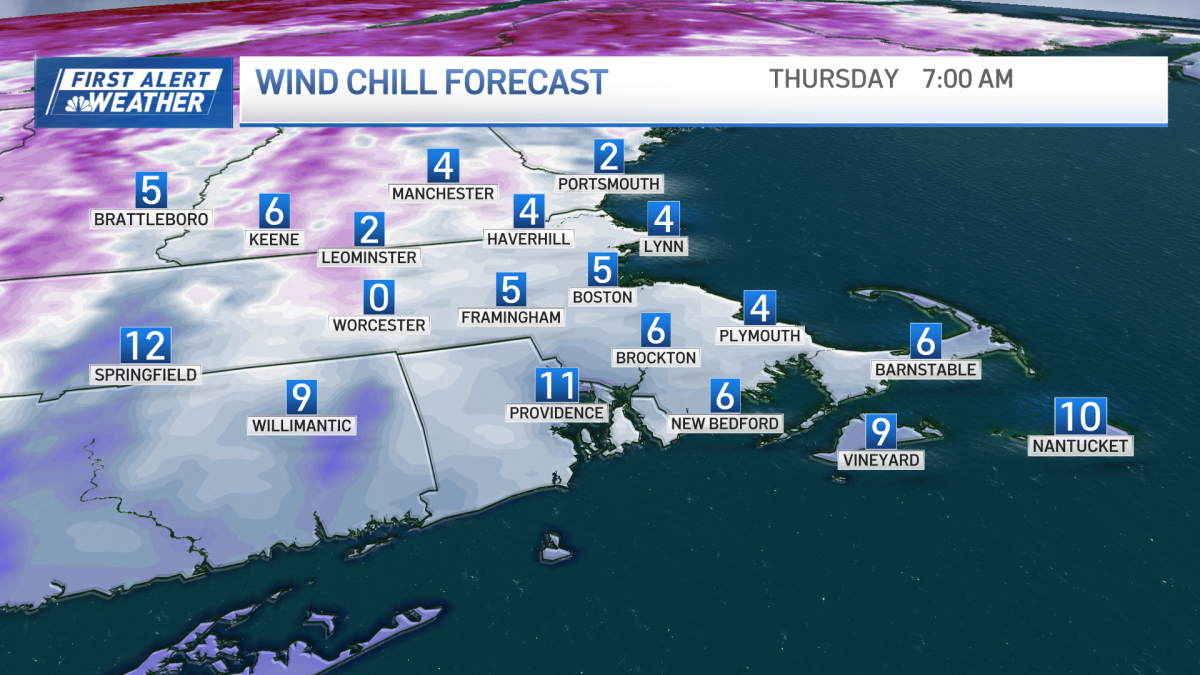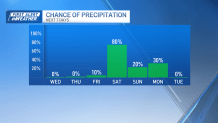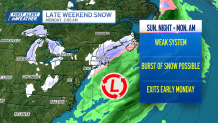Boston, MA
The decline of Boston Market: Why the chain that sparked the rotisserie chicken craze has closed dozens of stores
- Boston Market, founded in 1985, sparked the rotisserie chicken craze in the late 1980s and 1990s.
- The chain once owned by McDonald’s is now shuttering stores and faces lawsuits over unpaid bills.
- This week, New Jersey officials ordered the closure of 27 locations tied to an unpaid wages probe.
In early November, Brenda Rivera, 64, of California, got a “buy one get one free” coupon for Boston Market. She was excited to use it, but ran into one big problem – she couldn’t find a location in her neighborhood.
The restaurant Rivera had patronized for years had shut down. So, she went to another one about 10 miles away. But, when she arrived at lunchtime, the store had run out of classic menu staples. Soup, rice, and mashed potatoes were out of stock.
“I was really disappointed; they didn’t have anything. Just the chicken,” Rivera told Insider.
Customers like Rivera are experiencing the impacts of a chain spiraling financially.
Boston Market, whose spit–roasted whole birds sparked the rotisserie chicken craze in the late 1980s and early 1990s, is flailing as it faces lawsuits tied to unpaid bills, store closures, and state fines for unpaid wages.
The chain’s latest challenge came August 14 when New Jersey’s Labor Department ordered 27 locations closed. The temporary shuttering of the restaurants came after a state probe. The state said it found that the chain owed more than $600,000 in back wages to 314 employees. The agency also fined Boston Market $2.6 million.
Seth Wenig/Associated Press
Is Boston Market going out of business?
Between 2017 and 2022, the Golden, Colorado-based chain closed 161 stores, according to market research firm Technomic
About 50 more stores have closed this year. including the stores in New Jersey, according to trade magazine Restaurant Business.
The New Jersey citation alleges unpaid or late payment of wages and failure to pay minimum wage and earned sick leave to employees. The state labor agency also fined the chain for “hindrance of the investigation” and alleges that the chain failed to maintain records for earned sick leave.
“With restaurants across the country, Boston Market needs to set a better example for fair treatment of its workers,” Joseph Petrecca, the labor department’s assistant commissioner, said in a statement.
Boston Market, owned by Engage Brands since 2020, could not be reached for comment.
The chain’s woes in New Jersey are part of a series of legal troubles plaguing the chain.
Boston Market is facing lawsuits in Massachusetts and Arizona that also allege unpaid wages, according to Restaurant Business.
In July, the chain was slapped with an $11.6 million lawsuit from distributor US Foods. The vendor, which mainly supplies produce to the chain, alleged in the suit that “beginning in 2022, Boston Market began to fall significantly behind in its payment obligations.”
“Boston Market repeatedly has breached its payment obligations to US Foods,” the suit states.
How did Boston Market get its start?
Boston Market began serving its homestyle meals of spit-roasted rotisserie chickens, made-from-scratch cornbread, and creamy mac and cheese in 1985. As it grew in popularity, it had about 1,200 locations, according to Restaurant Business.
The company, then called Boston Chicken, went public in 1993.
Amid the boom of fast-casual restaurants like Chipotle and Panera Bread, the chain struggled in the late 1990s. Boston Market also faced competition from grocery stores like Costco and Kroger, which began selling rotisserie chickens in 1994.
In 1998 the chain filed for bankruptcy as the desire for its homespun meals faded. McDonald’s bought the company out of bankruptcy in 2000 and sold it seven years later to Sun Capital Partners. Under Sun Capital, the chain closed 45 stores in 2019 as part of a transformation plan that included adding new chicken sandwiches to the menu, according to Nation’s Restaurant News.
A year later, Sun Capital sold Boston Market to Engage Brands, a Rohan Group of Companies subsidiary owned by real estate investor and restaurant operator Jignesh “Jay” Pandya.
Store counts declined, going from 461 at the end of 2017 to 300 at the end of 2022, according to Technomic.
Restaurant consultant Tim Powell said Boston Market has failed over the years to keep up with higher-quality fast-casual chains. The chain’s “cafeteria style food” essentially went out of style years ago, he said.
That’s too bad for fans like Rivera. Since her lunch trip last November, more Boston Markets have closed where she lives in Orange County, California. The only one left is about 14 miles from her home in Huntington Beach, California.
It’s not worth the drive, she said. “When Boston Market is good, it’s perfect. But when it’s not, it’s not good at all.”

Boston, MA
Constantine Manos, photographer for landmark ‘Where’s Boston?’ exhibit, dies at 90 – The Boston Globe

Among Mr. Manos’s books were “A Greek Portfolio” (1972; updated 1999), “Bostonians” (1975), “American Color” 1995) and ”American Color 2″ (2010). Mr. Manos’s work with color was notably expressive and influential.
“Color was a four-letter word in art photography,” the photographer Lou Jones, who worked with Mr. Manos on “Where’s Boston?,” said in a telephone interview. “But he was making wonderful, complex photographs with color, and that meant so much.”
Yet for all his formal skill, Mr. Manos always emphasized the human element in his work. “I am a people photographer and have always been interested in people,” he once said.
That interest extended beyond the photographs he took. He was a celebrated teacher. Among the students he taught in his photo workshops was Stella Johnson.
“He’d go through a hundred of my photographs,” she said in a telephone interview, “and maybe he’d like two. ‘No, no, no, no, yes, no.’ Costa really taught me how to see. I remember him looking at one picture and saying, “You were standing in the wrong spot.’ Something like that was invaluable to me as a young photographer.
“He was a very, very kind man, very generous. But he was very strict. ‘How could you do that?’ He was adored by his students and by his friends, absolutely. We were all lucky to have been in his orbit.”

Mr. Manos, who moved to Provincetown in 2008, lived in the South End for four decades. The South Carolina native’s association with the Boston area began when the Boston Symphony Orchestra hired him as a photographer at Tanglewood. He was 19. This led to Mr. Manos’s first book, “Portrait of a Symphony” (1961; updated 2000).
Constantine Manos was born in Columbia, S.C., on Oct. 12, 1934. His parents, Dimitri and Aphrodite (Vaporiotou) Manos, were Greek immigrants. They ran a café in the city’s Black section. That experience gave Mr. Manos a sympathy for marginalized people that would stay with him throughout his life. As a student at the University of South Carolina, he wrote editorials in the school paper opposing segregation. Later, he would do extensive work chronicling the LGBTQ+ community with his camera.
Mr. Manos became interested in photography at 13, joining the school camera club and building a darkroom in his parents’ basement. After graduating from college, Mr. Manos did two years of Army service in Germany, working as a photographer for Stars and Stripes. He joined Magnum in 1963. This had special meaning for him. Mr. Manos’s chief inspiration as a young photographer had been Henri Cartier-Bresson, one of Magnum’s founders. He was such an admirer he made a point of using the same equipment that Cartier-Bresson did.
That same year, Mr. Manos entered a seafood restaurant in Rome that was around the corner from the Pantheon. Prodanou, his future husband, was dining with friends. Noticing Mr. Manos, he gestured to him. “Would you join us for coffee?” The couple spent the next 61 years together, marrying in 2011.

Mr. Manos lived in Greece for three years, which led to “A Greek Portfolio.” He undertook a very different project in the Athens of America. Part of the city’s Bicentennial tribute, “Where’s Boston?” was a slice-of-many-lives view of contemporary Boston.
Located in a red-white-and-blue striped pavilion at the Prudential Center, it became a local sensation. The installation involved 42 computerized projectors and 3,097 color slides (most of them taken by Mr. Manos), shown on eight 10 feet by 10 feet screens. Outside the pavilion was a set of murals, consisting of 152 black-and-white photographs of Boston scenes, all shot by Mr. Manos.
“The most important thing I had to do was to keep my picture ideas simple,” he said in a 1975 Globe interview. “Viewers are treated to a veritable avalanche of color slides in exactly one hour’s time.”
In that same interview, he made an observation about his work generally. “I prefer to stay in close to my subjects. I let them see me and my camera and when they become bored they forget about me and then I get my best pictures.”
Among institutions that own Mr. Manos’s photographs are the Museum of Fine Arts; the Museum of Modern Art, New York; the Art Institute of Chicago; the High Museum of Art, Atlanta; the Library of Congress; and the Bibliothèque Nationale, Paris.
In addition to his husband, Mr. Manos leaves a sister, Irene Constantinides, of Atlanta, and a brother, Theofanis Manos, of Greenville, S.C.
A memorial service will be held later this year.
Mark Feeney can be reached at mark.feeney@globe.com.
Boston, MA
Below freezing temperatures again today

The winds are still going Wednesday, but the air temperatures remain at respectable levels. Highs will manage to weasel up to 30 in most spots. It’s too bad we’re not going to feel them at face value. Instead, we’re dressing for temps in the teens all day today.
Thursday and Friday are the picks of the week.
There will be a lot less wind, reasonable winter temperatures in the 30s and a decent amount of sun. We’ll be quiet into the weekend, as our next weather system approaches.
With mild air expected to come north on southerly winds, highs will bounce back to the low and mid-40s both days of the weekend.
Showers will be delayed until late day/evening on Saturday and into the night. There may be a few early on Sunday too, but the focus on that day will be to bring in the cold.
Highs will briefly sneak into the 40s, then fall late day.

We’ll also watch a batch of snow late Sunday night as it moves up the Eastern Seaboard.
Right now, there is a potential for some accumulation as it moves overhead Sunday night and early Monday morning.
It appears to be a weak, speedy system, so we’re not expecting it to pull any punches.

Enjoy the quieter spell of weather!
Boston, MA
Boston City Councilor will introduce

BOSTON – It could cost you more to get a soda soon. The Boston City Council is proposing a tax on sugary drinks, saying the money on unhealthy beverages can be put to good use.
A benefit for public health?
“I’ve heard from a lot of residents in my district who are supportive of a tax on sugary beverages, but they want to make sure that these funds are used for public health,” said City Councilor Sharon Durkan, who is introducing the “Sugar Tax,” modeled on Philadelphia and Seattle. She said it’s a great way to introduce and fund health initiatives and slowly improve public health.
A study from Boston University found that cities that implemented a tax on sugary drinks saw a 33% decrease in sales.
“What it does is it creates an environment where we are discouraging the use of something that we know, over time, causes cancer, causes diet-related diseases, causes obesity and other diet-related illnesses,” she said.
Soda drinkers say no to “Sugar Tax”
Soda drinkers don’t see the benefit.
Delaney Doidge stopped by the store to get a mid-day pick-me-up on Tuesday.
“I wasn’t planning on getting anything, but we needed toilet paper, and I wanted a Diet Coke, so I got a Diet Coke,” she said, adding that a tax on sugary drinks is an overreach, forcing her to ask: What’s next?
“Then we’d have to tax everything else that brings people enjoyment,” Doidge said. “If somebody wants a sweet treat, they deserve it, no tax.”
Store owners said they’re worried about how an additional tax would impact their businesses.
Durkan plans to bring the tax idea before the City Council on Wednesday to start the conversation about what rates would look like.
Massachusetts considered a similar tax in 2017.
-

 Health1 week ago
Health1 week agoOzempic ‘microdosing’ is the new weight-loss trend: Should you try it?
-
/cdn.vox-cdn.com/uploads/chorus_asset/file/25822586/STK169_ZUCKERBERG_MAGA_STKS491_CVIRGINIA_A.jpg)
/cdn.vox-cdn.com/uploads/chorus_asset/file/25822586/STK169_ZUCKERBERG_MAGA_STKS491_CVIRGINIA_A.jpg) Technology6 days ago
Technology6 days agoMeta is highlighting a splintering global approach to online speech
-

 Science4 days ago
Science4 days agoMetro will offer free rides in L.A. through Sunday due to fires
-
/cdn.vox-cdn.com/uploads/chorus_asset/file/25821992/videoframe_720397.png)
/cdn.vox-cdn.com/uploads/chorus_asset/file/25821992/videoframe_720397.png) Technology1 week ago
Technology1 week agoLas Vegas police release ChatGPT logs from the suspect in the Cybertruck explosion
-

 Movie Reviews1 week ago
Movie Reviews1 week ago‘How to Make Millions Before Grandma Dies’ Review: Thai Oscar Entry Is a Disarmingly Sentimental Tear-Jerker
-

 Health1 week ago
Health1 week agoMichael J. Fox honored with Presidential Medal of Freedom for Parkinson’s research efforts
-

 Movie Reviews1 week ago
Movie Reviews1 week agoMovie Review: Millennials try to buy-in or opt-out of the “American Meltdown”
-

 News1 week ago
News1 week agoPhotos: Pacific Palisades Wildfire Engulfs Homes in an L.A. Neighborhood















